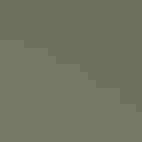Red-cockaded Woodpecker
At a Glance
Once fairly common in the southeastern United States, this bird is now rare, local, and considered an endangered species. It requires precise conditions within mature pine forest, a habitat that is now scarce. Lives in isolated clans, each clan an extended family group, with one pair of adults assisted in their nesting by up to four additional birds. The red cockade for which the bird is named, a small patch of feathers behind the eye of the male, is usually hard to see in the field.
All bird guide text and rangemaps adapted from by Kenn Kaufman© 1996, used by permission of Houghton Mifflin Harcourt Publishing Company. All rights reserved.
Category
Picidae, Woodpeckers, Tree-clinging Birds
IUCN Status
Near Threatened
Habitat
Forests and Woodlands, Shrublands, Savannas, and Thickets
Region
Florida, Mid Atlantic, Plains, Southeast, Texas
Behavior
Flap/Glide, Undulating
Population
19.000
Range & Identification
Migration & Range Maps
Generally permanent resident; may wander some distance, perhaps after habitat destruction. Young females often disperse farther away from birthplace than young males.
Description
8" (20 cm). Back barred with black and white; big white cheek patch, black cap. Small red "cockade" behind eye of male is seldom noticeable. See other bar-backed woodpeckers.
Size
About the size of a Robin, About the size of a Sparrow
Color
Black, Red, White
Wing Shape
Broad, Rounded
Tail Shape
Multi-pointed, Wedge-shaped
Songs and Calls
A nuthatch-like yank-yank. Also a rattling scold note.
Call Pattern
Falling, Flat
Call Type
Chirp/Chip, Drum, Rattle, Scream, Trill
Habitat
Open pine woodlands. Ideal habitat is mature pine woods (trees 80-100 or more years old), with very open understory maintained by frequent fires (the pines are fire-resistant). Most common in longleaf pine, but inhabits other pines as well, rarely cypress adjacent to pine woods.
Sign up for ÃÛèÖAPP's newsletter to learn more about birds like the Red-cockaded Woodpecker
Behavior
Eggs
3-4, sometimes 2-5. White. Incubation is by both parents and to some extent by additional helpers; breeding male is on nest at night. Incubation period notably short, about 10-11 days.
Young
Are fed by both parents and by helpers. Young leave nest at about 26-29 days. 1 brood per year, rarely 2.
Feeding Behavior
Forages mainly on pine trunks and branches, flaking off bits of bark in search of insects underneath. Family groups may forage together, males tending to forage on branches and upper trunk, females on lower trunk.
Diet
Mostly insects. Feeds mainly on insects and other arthropods, especially ants and beetles, also termites, roaches, centipedes, and others. Also eats some wild fruits and pine seeds.
Nesting
Taking part in nesting are the breeding pair plus 1-4 additional "helpers." These helpers are mostly males (70-95% of those studied) and mostly the breeding pair's offspring from previous seasons. Nest: Preferred sites are cavities excavated in large live pines infected with red heart fungus (which gives tree soft center inside solid outer shell). Cavity usually 30-40' above ground, can be much lower or higher (to well above 100'). Entrance surrounded by tiny holes from which sticky resin oozes out, protecting nest from climbing predators.
Conservation
Conservation Status
Endangered. Has disappeared from many areas of former occurrence, with ongoing decline documented in several regions. Total population perhaps under 10,000, many of these in isolated groups facing local extinction. Causes for decline include suppression of natural fires, over-cutting of pine forest in southeast.
Climate Threats Facing the Red-cockaded Woodpecker
Choose a temperature scenario below to see which threats will affect this species as warming increases. The same ÃÛèÖAPP change-driven threats that put birds at risk will affect other wildlife and people, too.





